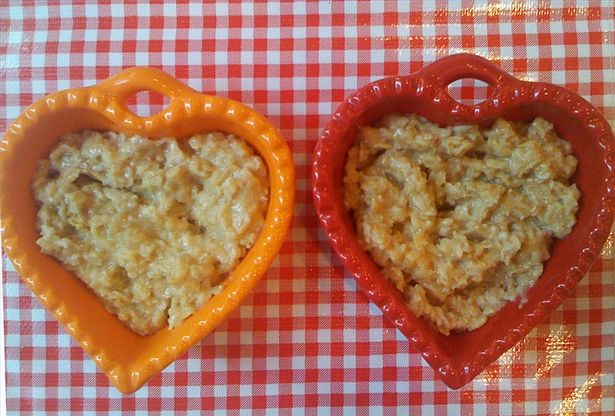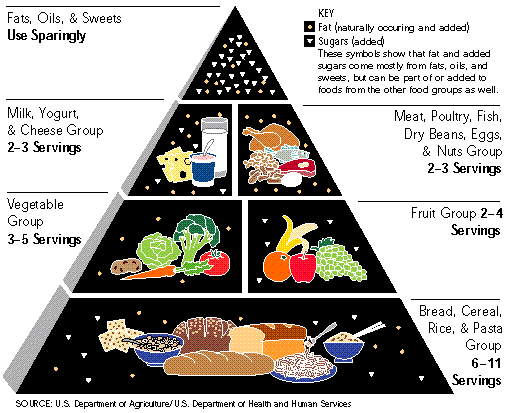1. Low calorie diet foods are the best option for those trying to lose weight.
It’s been said over and over again that when companies �remove� fat and calories from food, they’re adding other things we shouldn’t be eating, like excess salt and unnatural sweeteners. It’s definitely true but there are other reasons to stay away from low calorie diet foods.
People who replace �normal� food with the low calorie version often think they can indulge more because they can eat more of the diet stuff and still consume fewer calories. They continue to eat large portions of their diet food and over time, they condition their brain to larger portion sizes. That works for a while but rarely do people stay on a low calorie diet. Eventually, we all migrate back toward our old eating habits and since we’ve redefined our idea of portion sizes, we eat larger portions than we did before the diet. Before long we’ve gained back all the weight we lost. And then some. Hence yo-yo dieting.
Instead of focusing on diet and low calorie food, find ways to reduce your caloric intake while still eating the foods you love. For some, adding less sugar to their favorite recipes as a great option. As a chef, I can’t bring myself to compromise the quality of a good, classic recipe so instead of changing the recipe, I change my portion. I’m much happier eating 1/3 cup of a rich bread pudding than I am a full cup of low-sugar angel food cake. It takes more discipline but not more than we’re capable of. Explore your options and do whatever gives you the greatest chance at success.
2. Gluten is bad for you!
Let me start by saying that there aren’t enough nutritional benefits to highly processed grains for me to endorse them so I’m not necessarily pro-flour. But the idea that gluten is at the root of obesity and poor health has been growing in popularity for years and it’s just not true. For me, there was no better proof than visiting Europe. The French eat bread like it’s their job and at a healthy BMI, I felt obese next to the Parisiennes on the Metro.
It’s estimated that less than 10% of the population has a gluten intolerance and only 1% have celiac disease yet the market shelves are flooded with �gluten free� products. It’s great for a former co-worker of mine who was diagnosed with celiac disease long before it was trendy� he has way more food options now than he ever had before. But for the other 90% of us, gluten is not the problem. The problem is our lifestyle.
Eat the foods you love (in moderation, of course) and find ways to increase your activity levels. I said �no� to drive-thru anythings quite a while ago in an effort to increase my activity and it has helped. Wash your car at home instead of driving through a car wash. Mow your own lawn instead of paying someone to do it (let’s be honest, you were just watching TV or surfing the web anyway). At the very least, commit to walking or jogging. Start small and slowly increase your distance. Every little bit is a step in the right direction.
3. Healthy foods are more expensive!
This is far from the truth. It can seem true to people who eat out more than they cook but that’s because they have barren cabinets. When they want to cook a meal at home, they usually have to purchase everything they need for that one dish. People who cook often and have a well stocked pantry use one product for several different meals so they stretch their purchases farther.
To save money on nutritious foods, stay away from trendy, over-priced markets. Eating organic food is fine but it can be costly. An apple, even one that’s not organic, is always a much better option and less expensive than a bag of artificially coated nacho cheese tortilla chips. Stick to your favorite run-of-the-mill grocery store or farmer’s market and watch for sales on meat and produce. It’s the best way to eat well without breaking the bank.
4. Coconut oil is better for you than canola or olive oil!
I’m not sure where this myth started but it has gained popularity over time. It seemed a little sketchy to me when I heard it a few years ago so I did some research.
At first, I read that coconut oil is lower in fat and calories than other types of oil but since it’s almost completely saturated fat, it’s worse for your overall health. That was enough for me to confidently tell people to avoid it. I did some additional research in preparation for this article and upon digging further, I found that coconut oil has the exact same amount of calories by volume as olive oil and has 0.5g fat less per tablespoon. Only coconut oil is 94% saturated fat versus olive oil which comes in at 14% saturated fat.
Our bodies need fat for a multitude of reasons and topping the list is for energy and vitamin absorption but not all fats are created equally. Saturated and Trans fats raise our LDL cholesterol (the bad cholesterol) which increases our chances for heart disease and diabetes. Unsaturated fats lower overall blood cholesterol and decrease chances for heart disease and diabetes.
Those of us who consume meat and dairy products get our fair share of saturated fats and need unsaturated fats to balance the effects. The best sources for unsaturated fats is plant-based oils (like canola and olive), avocado, nuts, and fatty fish (tuna and salmon). If you replace canola or olive oil, one of your top sources for unsaturated fat, with coconut oil, you tip the scales in the wrong direction.

 Starting Up An Aquaponics Set Up From See The Easy Way
Planting seeds in your aquaponics system can be a lot simpl
Starting Up An Aquaponics Set Up From See The Easy Way
Planting seeds in your aquaponics system can be a lot simpl
 The Simplest Way To Lessen Your High Cholesterol By Natural Means
High-cholesterol is a major variable inside the countrywide
The Simplest Way To Lessen Your High Cholesterol By Natural Means
High-cholesterol is a major variable inside the countrywide
 Introduction To Of Some Lower Cholesterol Foodstuffs
Cholesterol is a fat-like element contained in the physique
Introduction To Of Some Lower Cholesterol Foodstuffs
Cholesterol is a fat-like element contained in the physique